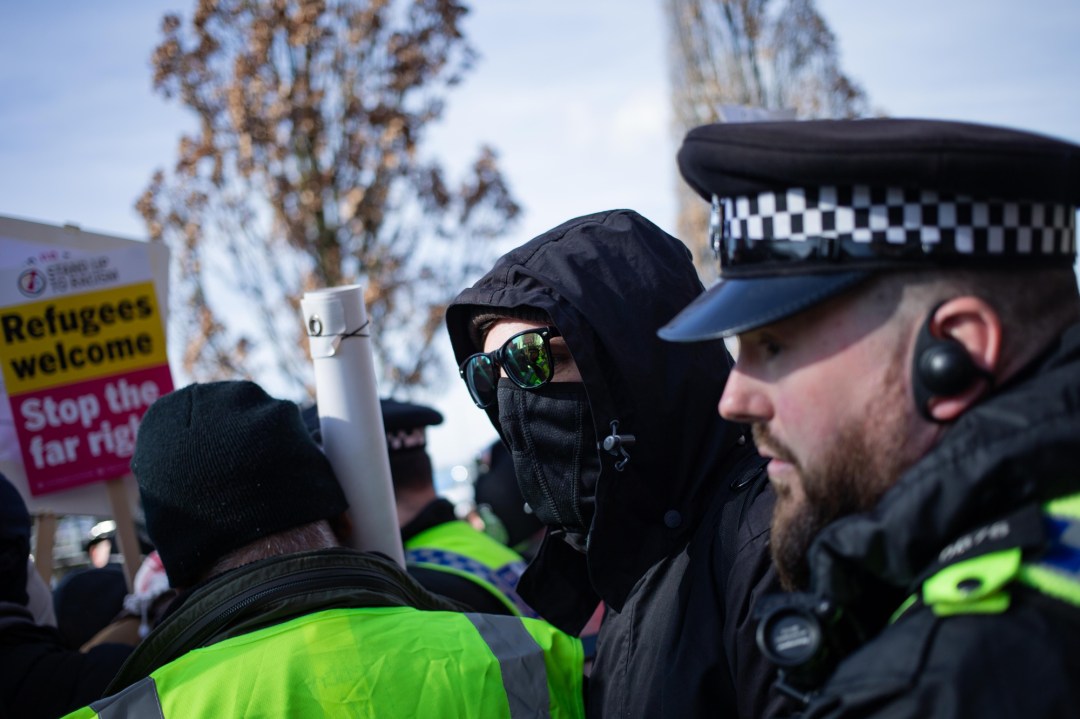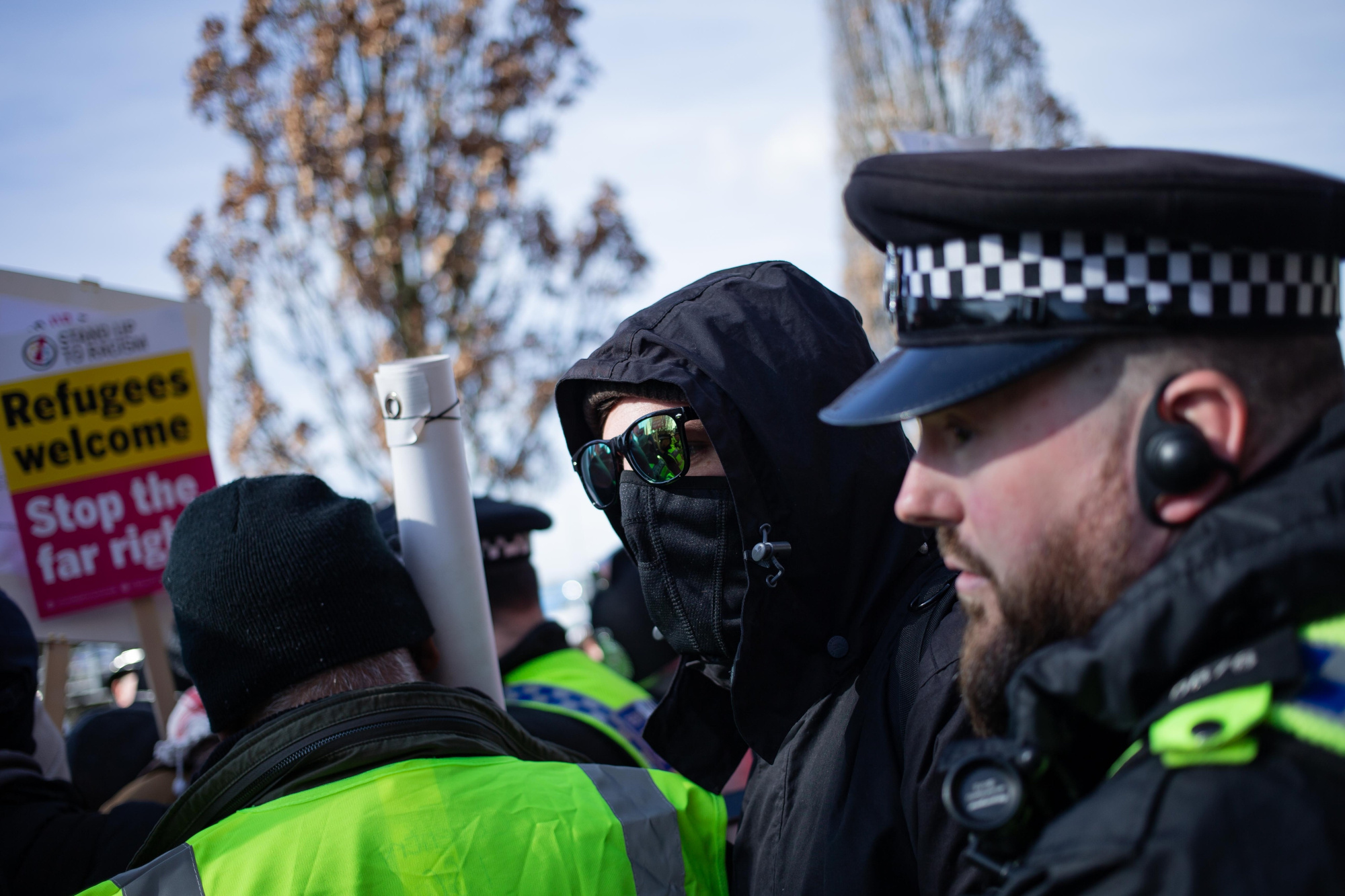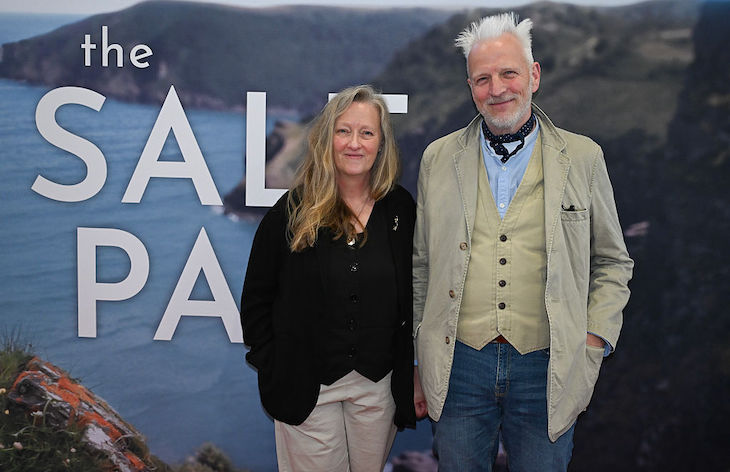As the government’s Crime and Policing Bill makes its way through parliament, MPs on the Public Bill Committee are scrutinising its clauses today – including, potentially, Clause 86. If passed, this provision will make it a criminal offence to conceal your identity at a protest. For some people this may sound sensible enough. But for dissidents from authoritarian regimes – and their families thousands of miles away – it’s a very real threat to their physical safety.
In fairness to those currently grappling with the issue, the legislation responds to a genuine problem: the adoption in the UK of the ‘black bloc’ face-concealing tactics pioneered by radical anarchists in the US. Since Hamas’s attack on Israel and the subsequent military response, pro-Palestinian demonstrations have regularly taken place in British cities. A sizeable minority of participants have clashed with police, brandished anti-Semitic placards and shouted anti-Semitic slogans. Many of the protestors have hidden their faces with masks or scarves.
The law as it stands allows police, with proper authorisation, to require someone to remove a face covering. But wearing such a covering is not, in itself, criminal.
Clause 86 of the new Bill seeks to change that. It would allow police to designate areas where ‘wearing or otherwise using an item that conceals [your] identity’ becomes an offence. A police inspector may do this if they reasonably believe that a protest ‘may take place or is taking place’ which is ‘likely to involve or has involved the commission of offences’ – and that it is ‘expedient’ to impose the restriction. No definition of ‘expedient’ is offered. No judicial oversight is required.
So far, concern from civil-liberties groups has focused on how these powers might operate alongside the UK’s facial recognition surveillance. Although Clause 86 doesn’t mention facial recognition, the new law will essentially criminalise anyone who attempts to avoid it.
A far greater danger, though, comes from the fact that, if masks are banned at British protests, it won’t be just the British police doing the filming and carrying out the facial recognition. The not unreasonable presumption running through this debate is that anonymity implies evasion of the law. Yet for foreign dissidents, it’s not necessarily our law they’re looking to evade. For them, a mask is often their only defence against a government they fled but which continues to monitor, threaten and punish them.
One UK-based activist told the Atlantic in March that after he joined a pro-democracy protest in London, Chinese security agents harassed his family back in Hong Kong. His parents were summoned for questioning and shown photographs of him demonstrating on British soil. He was warned that unless he stopped protesting, his family would face the consequences.
The government of Iran has used similar tactics, with its agents orchestrating campaigns of harassment, surveillance and intimidation in the UK. During a 2021 protest in Whitehall, Iranian activists holding anti-regime placards noticed they were being extensively photographed and filmed. One of them was Shadi Amin of Justice for Iran, who was later quoted in a UK government report on Iranian anti-dissident activities. ‘We live with the threats,’ she said. ‘They make threats against our families in Iran.’
The right to wear a mask at a protest is not absolute. Certainly, it’s not easy to justify in the case of those hoping to get away with anti-Semitic hate crimes. But surely it’s a different matter for people trying to protect themselves as they protest peacefully against some of the world’s worst regimes. Clause 86 threatens to override this distinction completely.
Proponents of the Crime and Policing Bill may argue that the powers to ban coverings will be used sparingly, and only when a genuine threat exists. But the threshold for designation is low, the criteria are subjective and, once available, such tools are rarely left on the shelf. In practice, the powers could well be used ‘just in case’, following a vague risk assessment or a prior history of violence.
Which brings us to the other major problem with Clause 86. Authoritarian regimes – with their networks of loyalists, provocateurs and online propagandists – are uniquely positioned to ensure that face-covering bans are implemented. These regimes can easily manufacture threats and violence that will trigger a face-covering ban from the police. They can then use this to identify and punish dissidents still bold enough to protest.
Already, there’s no shortage in Britain of anti-dissident violence from authoritarian loyalists. In 2021, for instance, several pro-democracy Hongkongers were hospitalised after being attacked in London’s Chinatown by what Chinese state media called ‘patriots’. Only last year, five Iranians holding a peaceful protest outside a memorial in Wembley for Iran’s President Ebrahim Raisi were set on by supporters of the Tehran government. Four of the five ended up in hospital, including one woman who later warned that the ‘IRGC [Islamic Revolutionary Guard Corps] are on British soil’.
The more violence, the more face-unmasking orders. The more unmasking orders, the more photographs and the more names. Clause 86 is a law is built for a national jurisdiction – but the threat is transnational.
A power designed to preserve public order in a liberal democracy could end up giving authoritarian governments exactly what they want: the identity of their dissidents. This may not be the intention of Clause 86. But unless Parliament wakes up to the dangers now – while the Bill is still in committee and amendments are possible – it might very well be the effect.








Comments